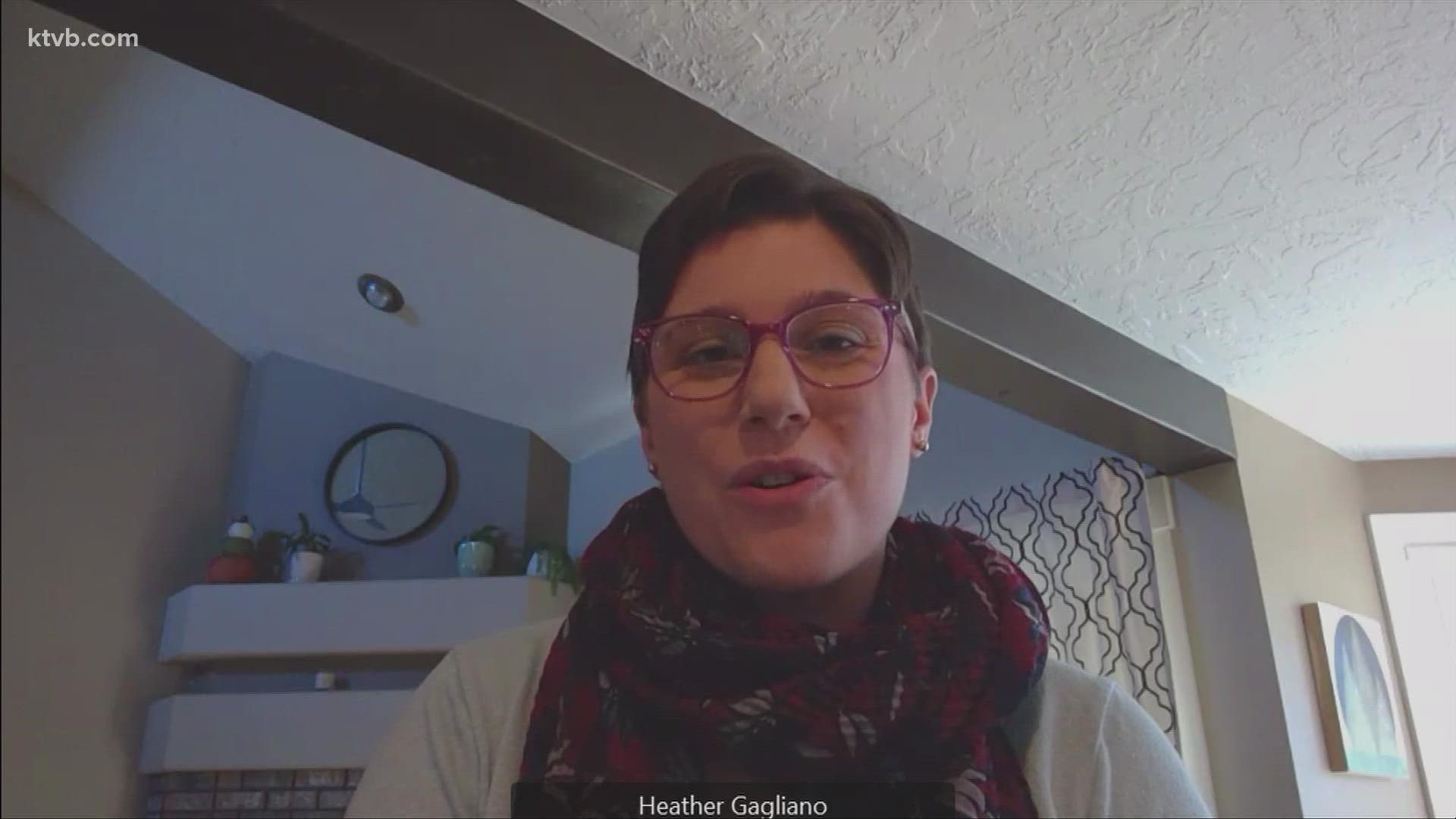BOISE, Idaho — COVID-19 case numbers and hospitalizations are still high, "but declining," and those trends are starting to relieve some of the pressure on Idaho's healthcare providers, Idaho Dept. of Health and Welfare Director Dave Jeppesen said Tuesday.
As the Gem State appears to be seeing the latest COVID-19 surge slow, state medical and public health leaders from the Idaho Department of Health and Welfare held their weekly press conference on the state of the coronavirus pandemic in Idaho on Tuesday afternoon.
One issue looming large is the backlog of non-emergency surgeries and other inpatient treatments that, while medically necessary, aren't critical life-or-death situations, and have been put on hold.
"We know it's in the thousands. It's a large number," Jeppesen said when asked about the statewide scope of the backlog. "For those patients that are impacted, that's uncomfortable."
Division of Public Health administrator Elke Shaw-Tulloch said the declining numbers of new COVID-19 cases and COVID-related hospitalizations are "relieving at least some of the pressure" and allowing hospitals to prepare to perform procedures that had been put on hold.
A related question that remains is how much longer crisis standards of care will remain activated in Idaho. They were activated statewide on Sept. 16, a little more than a week after they were activated for the Panhandle and North Central health districts.
Jeppesen said state health officials anticipate Idaho is "on a path to exiting crisis standards of care," but there is no time frame.
"A decision will be made when the surge of patients being driven by COVID-19 no longer exceeds the healthcare resources available. We do monitor the situation daily," Jeppesen said. "Once we exit crisis standards of care, there will still be some stress on the hospitals, who will likely still be operating in contingency care protocols for some time."
Jeppesen clarified that the activation of crisis standards of care does not compel Idaho hospitals to operate under those standards; rather, it's an acknowledgement of scarce resources, whether the issue is staffing, equipment, or space for treatment. Also, he said, some parts of the state may remain in crisis standards even as other regions move off of them and back to contingency and conventional standards.
Speakers at Tuesday's press briefing also included state epidemiologist Dr. Christine Hahn, deputy state epidemiologist Dr. Kathryn Turner, and Idaho Immunization Program manager Sarah Leeds.
Hahn said Idaho health officials are getting ready for two new therapeutic drugs expected to receive authorization from the Food and Drug Administration -- one is an antiviral medication that can be taken orally, and has been shown to prevent hospitalizations; another is what Hahn described as a "monoclonal antibody mixture" that can prevent people with suppressed immune systems from becoming ill with COVID-19 in the first place.
Hahn said Idaho public health officials are focusing on increasing the vaccination rate among those who are still unvaccinated and on addressing challenges related to Idaho's Hispanic/Latino population, who Hahn said is "disproportionately represented among people dying of COVID."
Heather Gagliano, a registered nurse who has worked with Idaho's Hispanic communities with COVID-19 outreach, was the special guest at Tuesday's briefing. She volunteers with the Idaho Immunization Coalition, reaching out to rural communities and communities of color. Gagliano said the most successful vaccine outreach efforts have been those in which the coalition partnered with trusted organizations already in those communities.
A pediatric dose of the Pfizer-BioNTech COVID-19 vaccine is now available for children ages 5-11. The Idaho Dept. of Health and Welfare said as of Tuesday, 8,667 children in that age group have received the vaccine. That age group is not yet counted in the online vaccine data dashboard maintained on the state's coronavirus website. Leeds said that information will likely be added some time next week.
As a vaccine becomes available for more school-aged children, some school districts, including West Ada -- Idaho's largest -- are removing or preparing to remove restrictions such as face-mask requirements. Hahn said while "we're all eager to get back to normal," state health officials are worried that removing mask mandates now is "too hasty," as many kids remain unvaccinated.
"Going into the holidays, we know that we're all going to be tempted to go - and going - visiting, and having family gatherings and being indoors more, and getting colder, so we are concerned," Hahn said.
Shaw-Tulloch said CDC guidelines continue to recommend masks in communities where the COVID-19 transmission rate remains high, and that most counties in Idaho are still communities of high transmission.
A recording of Tuesday's media briefing, which was livestreamed on KTVB.COM, is now saved on KTVB's YouTube Channel.
The fourth surge of COVID-19 cases has been on a downward trend in recent weeks. As of Nov. 15, Idaho's 14-day moving average of total new cases reported each day was 586.36, the lowest since August 17 when the average was 591.64.
Idaho's moving average number of cases reported peaked in this fourth wave of cases on Oct. 3, with 1,286. A month ago, on Oct. 15, Idaho's moving average of new cases was 1,212.86.
On Tuesday, Idaho Gov. Brad Little announced that the Gem State would join a third lawsuit filed against President Joe Biden's COVID-19 vaccine mandate for federal contractors, companies with over 100 employees and healthcare workers. Little joins several other Republican governors in that lawsuit.
At KTVB, we’re focusing our news coverage on the facts and not the fear around the virus. To see our full coverage, visit our coronavirus section, here: www.ktvb.com/coronavirus.
Facts not fear: More on coronavirus
See our latest updates in our YouTube playlist:

